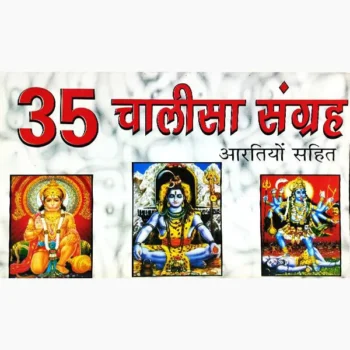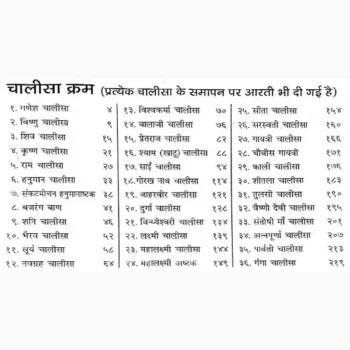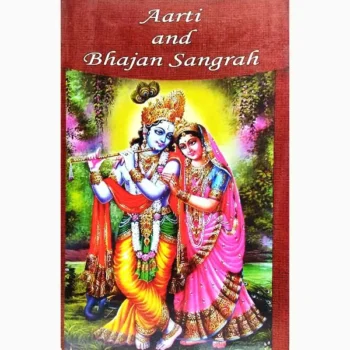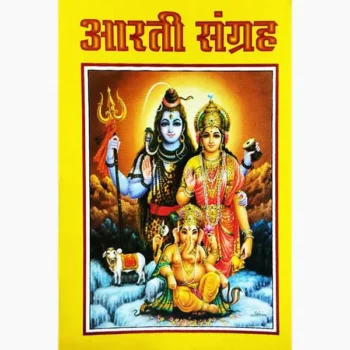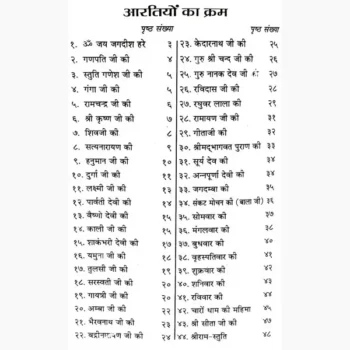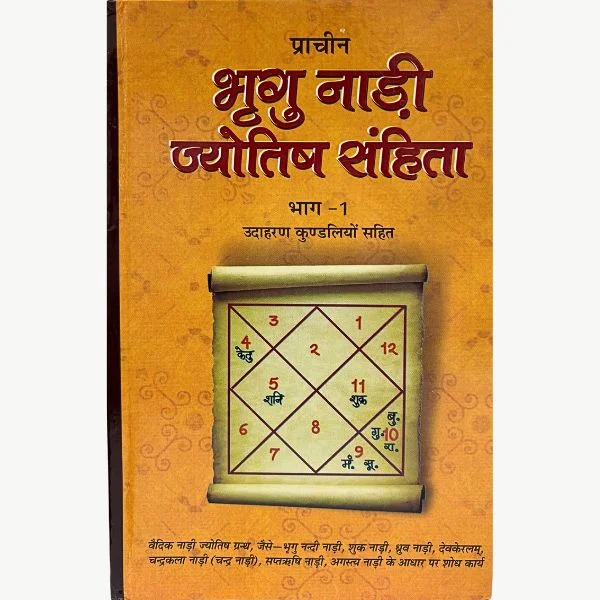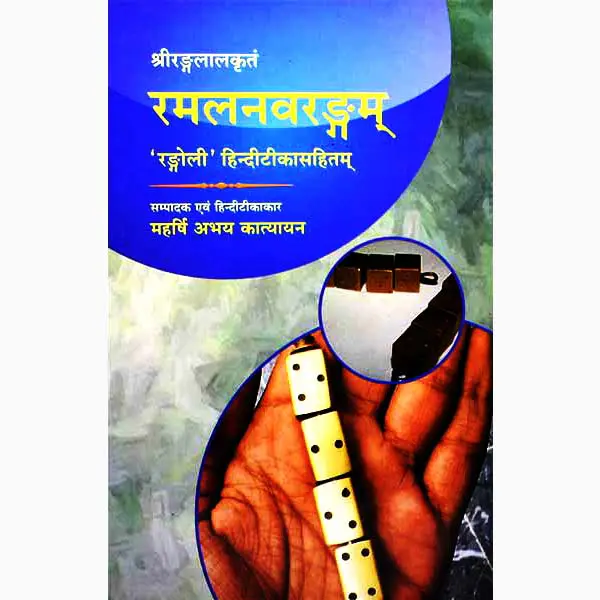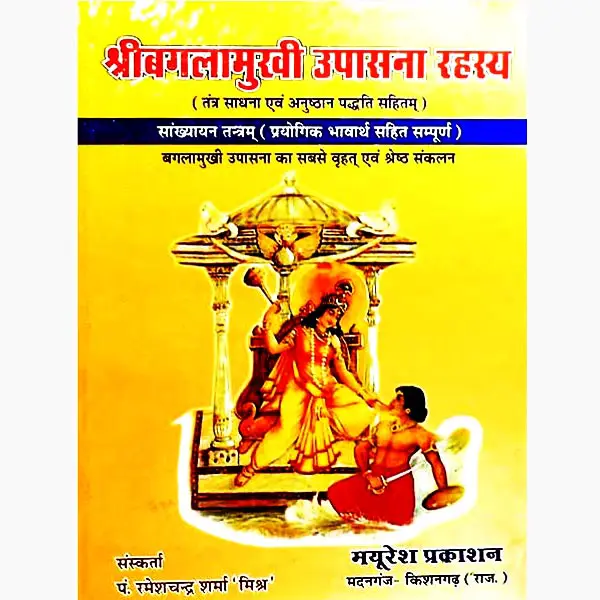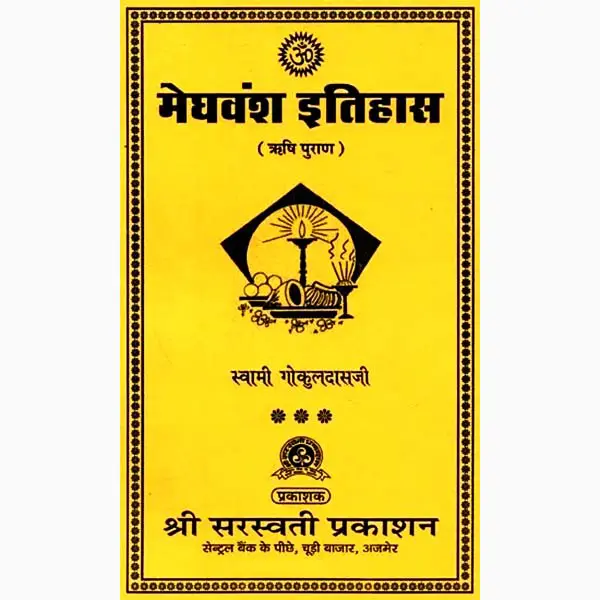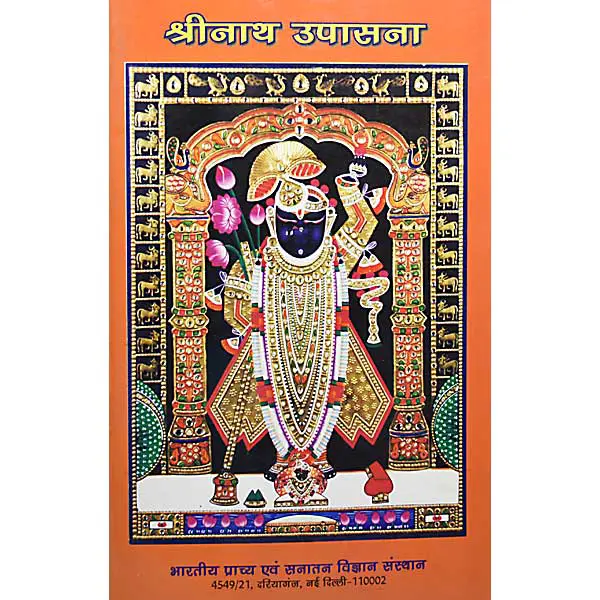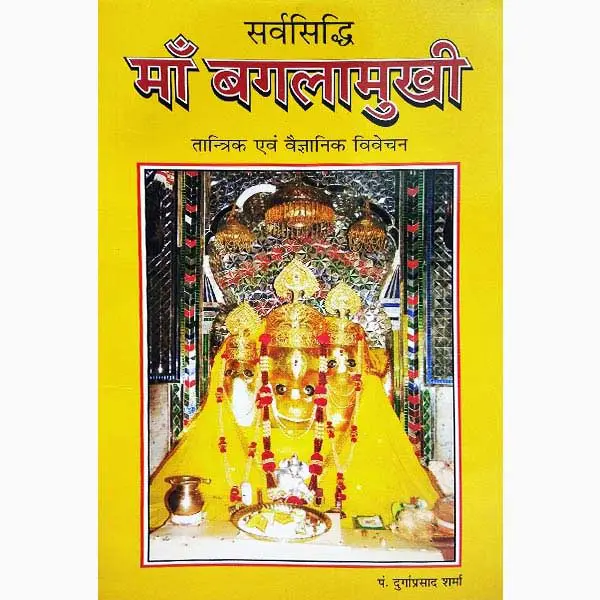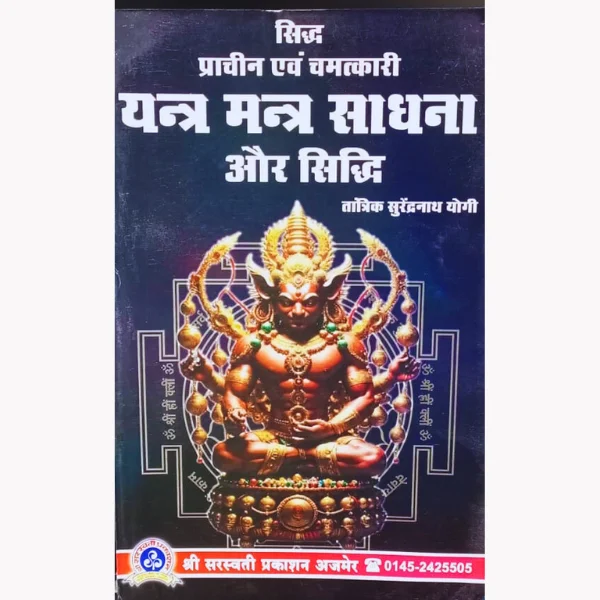
What is Aarti?
आरती क्या है?
What is Aarti? (आरती क्या है?): Aarti also spelled is a Hindu religious ritual of worship, a part of Pooja, in which light from wicks soaked in ghee (purified butter) or camphor is offered to one or more deities.
Aarti(What is Aarti) can be simple to extravagant, but always involves flame or light. It is sometimes performed one to five times daily, and usually at the end of a Pooja (in southern India) or bhajan session (in northern India). It is performed during almost all Hindu ceremonies and occasions. It involves the circulating of an ‘Aarti plate’ or ‘Aarti lamp’ around a person or deity and is generally accompanied by the congregation singing songs in praise of that deva or person (many versions exist). In doing so, the plate or lamp is supposed to acquire the power of the deity.
The priest circulates the plate or lamp to all those present. They cup their down-turned hands over the flame and then raise their palms to their forehead– the purificatory blessing, passed from the deva’s image to the flame, has now been passed to the devotee.
Procedure:
Aarti(What is Aarti) can be an expression of many things including love, benevolence, gratitude, prayers, or desires depending on the object it is done to/ for. For example, it can be a form of respect when performed to elders, prayers when performed to deities, or hope when performed for homes or vehicles. Emotions and prayers are often silent while doing Aarti, but this is determined by the person carrying out the ritual or the holiday involved. It’s also believed that goodwill and luck can be taken through symbolic hand movements over the flame.
When aarti is performed, the performer faces the deity of God (or divine element, e.g. Ganges river) and concentrates on the form of God by looking into the eyes of the deity (it is said that eyes are the windows to the soul) to get immersed. The flame of the aarti illuminates the various parts of the deity so that the performer and onlookers may better see and concentrate on the form. Aarti(What is Aarti) is waved in circular fashion, in clockwise manner around the deity.
After every circle (or second or third circle), when Aarti has reached the bottom (6–8 o’clock position), the performer waves it backwards while remaining in the bottom (4–6 o’clock position) and then continues waving it in clockwise fashion. The idea here is that aarti represents our daily activities, which revolves around God, a center of our life. Looking at God while performing aarti reminds the performer (and the attendees of the aarti) to keep God at the center of all activities and reinforces the understanding that routine worldly activities are secondary in importance. This understanding would give the believers strength to withstand the unexpected grief and keeps them humble and remindful of God during happy moments. Apart from worldly activities aarti also represents one’s self – thus, aarti signifies that one is peripheral to Godhead or divinity.
How to Perform Aarti:
The aarti plate is generally made of metal, usually silver, bronze or copper. On it must repose a lamp made of kneaded flour, mud or metal, filled with oil or ghee. One or more cotton wicks (always an odd number) are put into the oil and then lighted, or camphor is burnt instead. The plate may also contain flowers, incense and akshata (rice). In some temples, a plate is not used and the priest holds the ghee lamp in his hand when offering it to the Deities.
The purpose of performing aarti(What is Aarti) is the waving of lighted wicks before the deities in a spirit of humility and gratitude, wherein faithful followers become immersed in God’s divine form. It symbolizes the five elements:
- Space (Aakash)
- Wind (vayu)
- Fire (Agni)
- Water (jal)
- Earth (prithvi)
(or in this sequence ‘Bh’umi (Earth),’Agni (Fire),’G’agan (Space),’Wa’yu (Wind),’N’eer (Water) (BHAGWAN)
Community Aarti is performed in the mandir; however, devotees also perform it in their homes.
The Plate of the Pooja:
The plate of the aarti must be made of metals like brass, copper, silver or gold. an lamp made up of dough of flour, metal or earth i kept. It may be round, five faced, seven faced or more but of odd numbers. The wicks poured into the ghee or oil in the lamp are placed and burnt. Usually oil is used to burn the protection lamp and ghee in the general. Besides the lamp, flowers, camphor, incense sticks, benzyl are kept on the plate. In the case of river aarti(What is Aarti), only lamps are used with hundreds of wicks which is called sahasradeep. It is to be noted that the number of wicks must be in odd numbers.
Importance of Pooja Materials:
During the aarti different types of materials are used. The pitcher is not only used but some materials are put inside. These materials are based on religious and scientific reasons.
Pitcher:
This is made up of a particular shape. The inside of this is fully vacant. According to religious scriptures, Lord Shiva lives in this place. This shows that while performing Aarti(What is Aarti) the devotee is totally absorbed into the Lord Shiva. It is said that all the gods reside in this pitcher.
Water:
The pitcher full of water is said to be the seat of the deities. It is a pure element according to mythology, so the god of the water becomes happy by this act.
Coconut:
During the performing the aarti(What is Aarti), a coconut is placed on the neck of the pitcher. A store of energy is believed to be found on the apex of the coconut. When we recite aarti(What is Aarti), the energy on the top of the coconut reaches to the water by sound waves. The waves are too fine.
Gold:
In Hindu mythology it is said that gold spreads positive energy around it. So it is called pure. So gold is called to be the medium to connect with god.
Copper coin:
The copper has the ability to produce pious waves more than the other metals. The waves formed inside the pitcher enters in the ether of the atmosphere. Dropping coins into the pitcher is the symbol of sacrifice. Hence, if copper coins are dropped into the pitcher, it means that the devotee is absorbing in pious momentum.
Water of Seven Rivers:
The water from Ganges, Godavari, Yamuna, Sindhu, Saraswati, Cauvery and Narmada are poured into the pitcher. These mixed water have a capability of attracting positive energy and emitting to atmosphere. Most of the sagas meditated for the enlightment by seating on the bank of these rivers.
Betel and Nuts:
If we throw betel nuts into the water, the waves produced by it ends the lavishness and produce a quality of absorbing the godly things inside. The creepers of betel is also called Nagbel means snake creepers which is said to be the chain of meeting earth with heaven.
Basil:
In Hindu mythology and Ayurved, the usage of basil is observed since ancient time. In comparison to other vegetations, basil has the power to purify the atmosphere.
आरती क्या है?
आरती क्या है: आरती हिन्दू उपासना की एक प्रकार विधि है। इसमें जलती हुई लौ या इसके समान कुछ खास वस्तुओं से इष्ट के सामाने एक विशेष विधि से घुमाई जाती है। ये लौ घी या तेल के दीये की हो सकती है या कपूर की। इसमें घी, धूप तथा सुगंधित पदार्थों को भी मिलाया जाता है। कई बार इसके साथ संगीत (भजन) तथा नृत्य भी होता है। मंदिरों में इसे प्रातः, सांय एवं रात्रि (शयन) में द्वार के बंद होने से पहले किया जाता है। प्राचीन काल में यह व्यापक पैमाने पर प्रयोग किया जाता था। तमिल भाषा में इसे दीप आराधनई कहते हैं।
सामान्यतः जब पूजा के अंत में आराध्य भगवान की आरती करते हैं। आरती में कई सामग्रियों का प्रयोग किया जाता है। इन सबका अपना विशेष अर्थ होता है। ऐसी मान्यता है, कि न केवल आरती करने, बल्कि इसमें सम्मिलित होने पर भी बहुत पुण्य मिलता है। किसी भी देवता की आरती करते समय उन्हें तीन बार पुष्प अर्पित करने चाहियें। आरती क्या है
आरती विधान:
आरती करते समय भक्त के मन में ऐसी भावना होनी चाहिए, की मानो वह पंच-प्राणों की सहायता से ईश्वर की आरती उतार रहा हो। घी की ज्योति जीव के आत्मा की ज्योति का प्रतीक मानी जाती है। यदि भक्त अंतर्मन से ईश्वर को पुकारते हैं, तो यह पंचारती कहलाती है। आरती प्रायः दिन में एक से पांच बार की जाती है। इसे हर प्रकार के धामिक समारोह एवं त्यौहारों में पूजा के अंत में करते हैं। एक पात्र में शुद्ध घी लेकर उसमें विषम संख्या (जैसे 3, 5 या 7) में बत्तियां जलाकर आरती की जाती है। इसके अलावा कपूर से भी आरती कर सकते हैं। सामान्य तौर पर पांच बत्तियों से आरती की जाती है, जिसे पंच प्रदीप भी कहते हैं। आरती क्या है
हिन्दू धर्म के अनुसार आरती पांच प्रकार से की जाती है। पहली दीपमाला से, दूसरी जल से भरे शंख से, तीसरी धुले हुए वस्त्र से, चौथी आम और पीपल आदि के पत्तों से और पांचवीं साष्टांग अर्थात शरीर के पांचों भाग (मस्तिष्क, हृदय, दोनों कंधे, हाथ व घुटने) से। पंच-प्राणों की प्रतीक आरती मानव शरीर के पंच-प्राणों की प्रतीक मानी जाती है। आरती क्या है
आरती कैसे करे?
आरती करते समय आरती की थाली या दीपक (या सहस्र दीप) को ईष्ट देव की मूर्ति के समक्ष ऊपर से नीचे, गोलाकार घुमाया जाता है। इसे घुमाने की एक निश्चित संख्या भी हो सकती है, व गोले के व्यास भी कई हो सकते हैं। इसके साथ आरती गान भी समूह द्वारा गाय़ा जाता है जिसको संगीत आदि की संगत भी दी जाती है। आरती होने के बाद पंडित या आरती करने वाला, आरती के दीपक को उपस्थित भक्त-समूह में घुमाता है, व लोग अपने दोनों हाथों को नीचे को उलटा कर जोड़ लेते हैं व आरती पर घुमाकर अपने मस्तक पर लगाते हैं। इसके दो कारण बताये जाते हैं। एक मान्यता अनुसार ईश्वर की शक्ति उस आरती में समा जाती है, जिसका अंश भक्त मिलकर अपने अपने मस्तक पर लेते हैं। दूसरी मान्यता के अनुसार ईश्वर की नज़र उतारी जाती है, या बलाएं ली जाती हैं, व भक्तजन उसे इस प्रकार अपने ऊपर लेने की भावना करते हैं, जिस प्रकार एक मां अपने बच्चों की बलाएं ले लेती है। ये मात्र सांकेतिक होता है, असल में जिसका उद्देश्य ईश्वर के प्रति अपना समर्पण व प्रेम जताना होता है। आरती क्या है
पूजा की थाली:
आरती का थाल किसी धातु का बना होना चाहिए है, जो प्रायः पीतल, तांबा, चांदी या सोना का हो सकता है। इसमें एक गुंधे हुए आटे का, धातु का, गीली मिट्टी आदि का दीपक रखा होता है। ये दीपक गोल, या पंचमुखी, सप्त मुखी, अधिक विषम संख्या मुखी हो सकता है। इसे तेल या शुद्ध घी द्वारा रुई की बत्ती से जलाया गया होता है। प्रायः तेल का प्रयोग रक्षा दीपकों में किया जाता है, व आरती दीपकों में घी का ही प्रयोग करते हैं। बत्ती के स्थान पर कपूर भी प्रयोग की जा सकती है। इस थाली में दीपक के अलावा पूजा के फ़ूल, धुप-अगरबत्ती आदि भी रखे हो सकते हैं। इसके स्थान पर सामान्य पूजा की थाली भी प्रयोग की जा सकती है। कई स्थानों पर, विशेषकर नदियों की आरती के लिये थाली की जगह आरती दीपक प्रयोग होते हैं। इनमें बत्तियों की संख्या 108 भी हो सकती है। इन्हें शत दीपक या सहस्रदीप भी कहा जाता है। ये विशेष ध्यानयोग्य बात है कि आरती कभी सम संख्य़ा दीपकों से नहीं की जाती है।
पूजा सामग्री का महत्व:
आरती के समय कई सामग्रियों का प्रयोग किया जाता है। पूजा में न केवल कलश का प्रयोग करते हैं, बल्कि उसमें कई प्रकार की सामग्रियां भी डालते जाते हैं। इन सभी के पीछे धार्मिक एवं वैज्ञानिक आधार भी हैं।
कलश:
एक खास आकार का बना होता है। इसके अंदर का स्थान बिल्कुल खाली होता है। मान्यतानुसार इस खाली स्थान में शिव बसते हैं। यदि आरती के समय कलश का प्रयोग करते हैं, तो इसका अर्थ है कि भक्त शिव से एकाकार हो रहे हैं। समुद्र मंथन के समय विष्णु भगवान ने अमृत कलश धारण किया था। इसलिए कलश में सभी देवताओं का वास माना जाता है।
जल:
जल से भरा कलश देवताओं का आसन माना जाता है। जल को शुद्ध तत्व माना जाता है, इसलिए जल से देवता प्रसन्न होते हैं।
नारियल:
आरती के समय कलश पर नारियल रखते हैं। नारियल की शिखाओं में सकारात्मक ऊर्जा का भंडार पाया जाता है। जब हम आरती गाते हैं, तो नारियल की शिखाओं में उपस्थित ऊर्जा तरंगों के माध्यम से कलश के जल में पहुंचती है। यह तरंगें काफी सूक्ष्म होती हैं।
सोना:
हिन्दू धर्म में ऐसी मान्यता है कि स्वर्ण धातु अपने आस-पास के वातावरण में सकारात्मक ऊर्जा फैलाता है। इसीलिये सोने को शुद्ध कहा जाता है। यही कारण है कि इसे भक्तों को भगवान से जोड़ने का माध्यम भी माना जाता है।
तांबे की मुद्रा:
तांबे में सात्विक लहरें उत्पन्न करने की क्षमता अन्य धातुओं की अपेक्षा अधिक होती है। कलश में उठती हुई लहरें वातावरण के ईथर में प्रवेश कर जाती हैं। कलश में पैसा डालना त्याग का प्रतीक भी माना जाता है। यदि कलश में तांबे के पैसे डालते हैं, तो इसका अर्थ है कि भक्त में सात्विक गुणों का समावेश हो रहा है।
सप्त नदियों का जल:
गंगा, गोदावरी, यमुना, सिंधु, सरस्वती, कावेरी और नर्मदा नदी का जल पूजा के कलश में डाला जाता है। सप्त नदियों के जल में सकारात्मक ऊर्जा को आकृष्ट करने और उसे वातावरण में प्रवाहित करने की क्षमता होती है। अधिकतर योगी-मुनि ने ईश्वर से एकाकार करने के लिए इन्हीं नदियों के किनारे तपस्या की थी।
पान सुपारी:
यदि हम जल में सुपारी डालते हैं, तो इससे उत्पन्न तरंगें रजोगुण को समाप्त कर देती हैं और भीतर देवता के अच्छे गुणों को ग्रहण करने की क्षमता बढ जाती है। पान की बेल को नागबेल भी कहते हैं। नागबेल को भूलोक और ब्रह्मलोक को जोड़ने वाली कड़ी माना जाता है। इसमें भूमि तरंगों को आकृष्ट करने की क्षमता होती है। साथ ही, इसे सात्विक भी कहा गया है। देवता की मूर्ति से उत्पन्न सकारात्मक ऊर्जा पान के डंठल द्वारा ग्रहण की जाती है।
तुलसी:
आयुर्वेद में व हिन्दू धर्म में तुलसी का प्रयोग सदियों से होता आ रहा है। अन्य वनस्पतियों की तुलना में तुलसी में वातावरण को शुद्ध करने की क्षमता अधिक होती है।
